
|
The world of non-commercial film and A-V |
Events Diary | Search | ||
| The Film and Video Institute | | ||||
The making of Behind the Wire
To BIAFF 2008 results | To Full Making Of Index
| |
Behind the Wire won a 4-Star Award at BIAFF 2008
In the countryside around the Polish town of Oswiecim the Nazis built a group of concentration camps. Up to 1.6 million people were killed in gas chambers there. Others were worked to death or subject to medical experiments. During Nazi occupation the town and its camps were known by a German name: Auschwitz. |
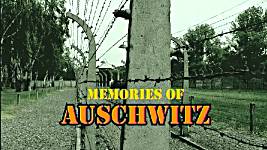 |
Behind The Wire
In May 2007 I took a short trip to Poland, a country that I had not previously visited. The main purpose was to experience Auschwitz. What occurred at this camp was part of world history during my lifetime, and I believe that those of my generation who are able to travel have an obligation to confront, as far as is possible sixty-five years later, examples of the very worst that people do to each other.
Most of the buildings at Auschwitz 1 contain displays of events that took place within the camp in the 1940s. The large photographs are truly awful, but the most arresting items are the enormous heaps of human hair, of shoes and of suitcases, which are all that now remains of the residue of peoples' lives.
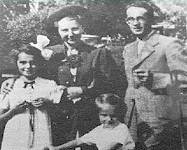 |
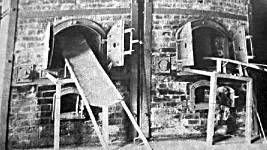 |
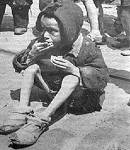 |
I had not anticipated the emotional power that a pair of shoes, formerly worn by some sad victim now forgotten, could express. The humbler the object, the more affecting it seemed to be.
The heavy and terminal feeling encountered on entering the dark crematorium is truly indescribable. Groups of people of all nationalities and ages explore the camp in almost complete silence, the only voices being those of the guides who add historical detail to the powerful eloquence of the exhibits. It is right that school parties are amongst those who come to witness this place.
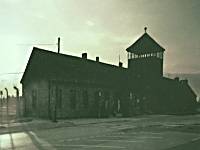 Black watchtowers stand like
tall sentries from a science fiction film, and the entire camp is
bordered and demarcated by miles of barbed wire. On the day I made my
visit to Auschwitz the sky was an uninterrupted azure blue and the sun
shone brilliantly - a mocking contrast to the tragic nature of the
location.
Black watchtowers stand like
tall sentries from a science fiction film, and the entire camp is
bordered and demarcated by miles of barbed wire. On the day I made my
visit to Auschwitz the sky was an uninterrupted azure blue and the sun
shone brilliantly - a mocking contrast to the tragic nature of the
location.
Auschwitz Birkenau, built when it became clear that Auschwitz 1 was simply not large enough to meet the killing quotas demanded by Himmler, is enormous. However, only a small proportion of the original buildings remain, and this is because they were destroyed hastily by the Germans to remove as much evidence as they could before the Russian army arrived to liberate whoever was left alive. Only the brick chimneys remain, standing as grisly monuments to the carnage taking place on a truly enormous scale.
Of all the messages a visitor receives from seeing Auschwitz at first hand, two stand out. The first is the industrial efficiency with which this mass killing was organised to meet its targets, just as if it were an arm of BMW or Mercedes. The second is related to the people who carried it out. They were neither from the other side of the world nor from an alien culture. They were people from a nation who, in temperament and in general outlook, are probably closer to us than any other.
People like us did this!
Not long after returning from Poland, I started producing a short dramatised documentary film featuring scenes and archive material from the Auschwitz concentration camps. The authentic atmosphere is created by video sequences shot on location with a Sony HVR-A1E, stripped down to its minimum for taking abroad. The video sequences were taken in high definition widescreen, but were desaturated during editing to convey a sense of desolation by means of reduced colour.
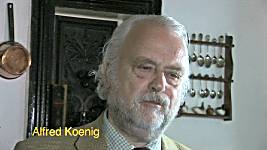 Seven veteran actors from the
Southport area were recruited to perform the roles of survivors from the
Auschwitz camps recalling their childhood memories of imprisonment.
Seven veteran actors from the
Southport area were recruited to perform the roles of survivors from the
Auschwitz camps recalling their childhood memories of imprisonment.
I wrote their "memories" by taking extracts written by real inmates from Auschwitz and similar camps, but I was careful to take small pieces from a variety of sources for each piece to camera, in order to avoid stealing a complete recollection from one individual.
I took rostrum camera shots of postcards bought at the shop in Auschwitz Birkenau, and these were dropped onto the timeline whenever they had relevance to the words.
The programme was edited using Media 100 software running on a G4 Mac. Because I have not yet upgraded to high definition editing, the sequences were down-converted to standard def. Fortunately Media 100 does this automatically without any instruction from the menu. The editing process was generally straightforward, probably because the content spoke for itself and needed no special effects or spectacular transitions. The font used for the titles, chapter headings and credits was "Stencil" often used on packing cases, and the colour of the graphics was German - red, yellow and black.
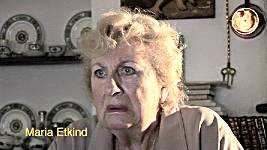 Some of the music used under
the voices was taken from the KPM CDs I was fortunate enough to win when
Learning The Game received a Gold Award at the IAC
International in 2007.
Some of the music used under
the voices was taken from the KPM CDs I was fortunate enough to win when
Learning The Game received a Gold Award at the IAC
International in 2007.
I have always thought of Behind The Wire as a private project, and I had no plans to show it to anyone beyond those who were involved. I am still getting used to the fact that, of all the films I have made, this one attracts the most interest. I suppose the main reason is its emotional strength, which emanates from a true story rather than a piece of fiction.
Since its 2007 première it has been shown in the Liverpool Film Night at FACT (The Foundation for Art and Creative Technology) and has won awards at Phase 4 and the IAC International. However, to me it remains a record of one the most affecting experiences in my life.
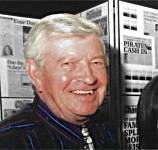
- Paul Bagshaw (Artworks Pictures)
[There is now a bi-annual amateur film festival held during
January in Oswiecim.
Its title is "To Love A Man".
Its aims include arousing love and respect for all mankind.
Click here
for details.]
Share your passions.

Share your stories.